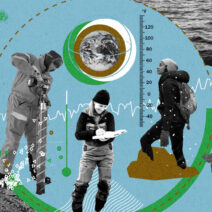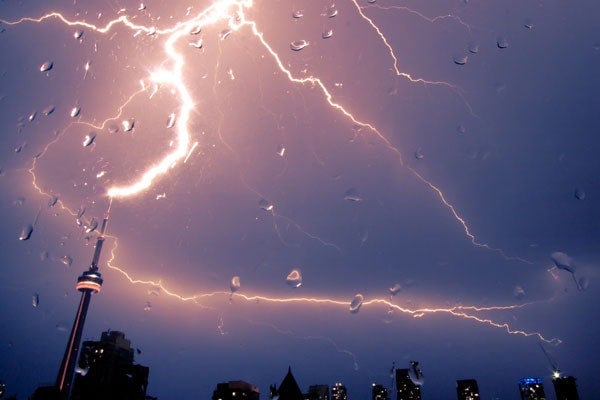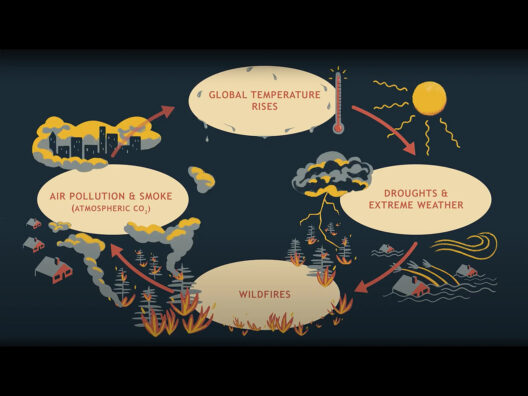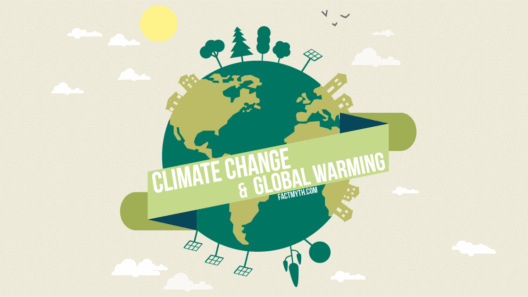The climate crisis is a multifaceted phenomenon affecting various aspects of the earth’s systems. One of the starkest manifestations of this crisis is the intensification of storms. As global temperatures rise, the atmosphere holds more moisture, increasing the fuel available for storms and exacerbating their intensity and frequency. Understanding the interplay between warming and storm dynamics is crucial for grasping the broader implications of climate change.
Storms, whether they take the form of hurricanes, cyclones, or severe thunderstorms, rely significantly on thermal energy derived from warm ocean waters. This is particularly evident in tropical regions, where sea surface temperatures have been steadily rising. The increase in temperature leads to a more robust evaporation process, creating more moisture-laden air. As this moist air rises and cools, it condenses into precipitation, and the energy released during condensation contributes to the storm’s strength. A greater amount of water vapor in the atmosphere directly correlates with stronger winds and heightened precipitation.
Research has demonstrated that even a modest increase in global temperatures—a mere degree or two—can lead to substantial changes in storm behavior. For instance, over the past few decades, there is clear evidence illustrating that hurricane intensity has increased. Hurricanes that once largely existed as category 1 or 2 systems are now more likely to reach category 4 or 5, corresponding with the increase in sea surface temperatures. Studies suggest that for every degree Celsius of warming, the maximum wind speed of hurricanes could increase by approximately 10 percent, allowing for devastating impacts on coastal communities.
It’s not just tropical storms that are affected. Extratropical storms, which commonly affect temperate regions, are also experiencing transformations. Higher temperatures can alter the jet stream patterns, potentially leading to more extreme weather events. This shift affects precipitation patterns, resulting in either excessive rainfall or prolonged drought in certain areas. Moreover, such alterations can cause the polar vortex to weaken, leading to disproportionate cold spells interspersed with warmer conditions, a phenomenon that disrupts traditional climate norms.
Moreover, the destructive impacts of these storms extend beyond immediate fatalities and physical destruction. The socio-economic ramifications are profound. Coastal cities with burgeoning populations face increased flooding, which exacerbates infrastructure vulnerability. The degradation of ecosystems due to storm surges and increased salinity further strains the delicate balance of local environments. Recovery from such catastrophic events requires extensive resources and time, which is often disproportionately shouldered by lower-income communities, exacerbating existing inequalities.
Another crucial aspect of storm intensification is the interaction with other climate change phenomena. For example, the feedback loops tied to polar ice melt and atmospheric changes create a complex web of consequences. As the polar ice melts, more sunlight is absorbed rather than reflected, further heating the ocean. This, in turn, contributes to rising sea levels and more pronounced storm surges. Additionally, warmer air can hold more moisture, leading to heavy rainfall events that outpace infrastructure’s ability to manage flooding, compounding the impacts of storm events.
The ramifications of intensified storms pose a considerable challenge to disaster preparedness and response frameworks. Existing models often rely on historical data for predictions. However, as climate models reveal differing patterns due to ongoing warming, authorities and urban planners must reconsider how to approach storm readiness. Incorporating climate adaptation strategies into urban planning can mitigate some of the risks associated with stronger storms. For instance, investing in green infrastructure, such as wetlands restoration and improved drainage systems, can enhance resilience against flooding.
In addition, communities are increasingly turning to technology and innovation as tools for adapting to these changing conditions. Predictive models utilizing artificial intelligence are enhancing the accuracy of storm forecasts, allowing for better preparation and response strategies. Early warning systems can be implemented to facilitate timely evacuations and ensure that vital resources are allocated where they are needed most. However, technology alone cannot solve the complex issues associated with climate change; systematic policy changes are crucial.
In light of these realities, it becomes imperative for policymakers to address the root causes of climate change. Transitioning to renewable energy sources, increasing energy efficiency, and reducing reliance on fossil fuels are essential components of a comprehensive strategy aimed at mitigating climate change impacts. Furthermore, engaging communities in climate resilience planning empowers local populations, fostering a collective approach to address the looming threats posed by increasingly powerful storms.
In conclusion, the relationship between rising global temperatures and the intensification of storms is an urgent issue that requires thorough understanding and immediate action. Every increment of warming shapes not only the future of weather patterns but also the security of communities globally. To navigate the challenges ahead, a multifaceted approach involving technological innovation, adaptive urban planning, and proactive policy-making is essential. Only through collaborative efforts can we hope to mitigate the impact of climate change and protect against the intensifying storms that accompany it.







